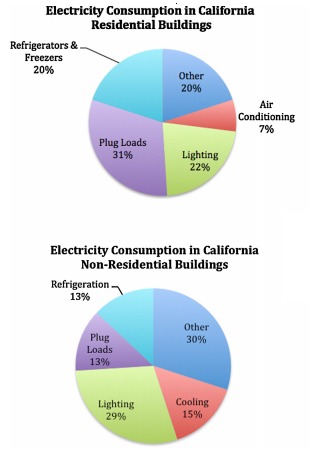By SHAWN SILVER, Budderfly
Note: Budderfly is a company sponsor of Leaders in Energy’s professional networking event on “Building a Smart City: Global and Metro DC Area Perspectives,” which will take place on September 15, 2015, from 6-8 pm, at the WeWork Wonder Bread Factory at 641 S. Street NW, Washington DC 20001. Shawn Silver will be making opening remarks at the event. More information is available at www.leadersinenergy.org
Organizations are beginning to use new technology, such as leveraging the Internet of Things (IOT), to change the way they look at and control energy. For example, it is possible to measure round-the-clock energy consumption and identify individual peak periods and high-consuming uses by utilizing specifically-engineered adapters and proprietary software. These smart energy management systems enable building occupants to measure and control every energy-consuming load in buildings down to the individual device level.
The Challenge
Historically systems used to control and monitor energy consumption have been stovepipes of technology with each of these focusing on a relatively narrow aspect of a building’s energy consumption. For example, Building Automation Systems (BAS) largely focused primarily on HVAC monitoring and control. Lighting control systems were mainly implemented to manage large scale lighting applications. For plug and process loads, generally only limited solutions were in place to manage electrical loads that were in many cases small and widely dispersed throughout an organization. With advances in microelectronics, cloud based software, and mobile technology, businesses are no longer tied to the traditional stove pipes of building technology. Innovative new solutions will utilize a widely dispersed network of sensors to gather real-time information about energy consumption and affect a broad array of controls across all building systems to optimize how, when and where energy is utilized. This new paradigm of building systems will be capable of engaging building stake holders at every level to bring about a holistic energy/resource management solution that will drive improved levels of energy savings that are not possible with the stovepipe approach to building management.
Plug-load management has surfaced as an important issue in the search for responsible energy usage. Plug load is the energy used by products that are powered by means of an ordinary AC plug (e.g., 100, 115, or 230 V).[1] Plug load accounts for equipment and appliances such as computers, vending machines, coffee makers, and space heaters that plug into a building’s electrical outlets and draw power.[2] Examples of common devices in a classroom setting are found in Table 1.[3] A recent Electricity Journal article cited the importance of plug load energy, as “[p]lug loads and miscellaneous loads are the largest areas of consumption for the residential and non-residential sectors, respectively,” as demonstrated in Figure 1.[4]
Figure 1
| Table 1: Plug Load Devices | ||
| Coffee makers | Refrigerators | Copiers |
| Computers/monitors | Televisions | Fish tanks |
| Laptops/tablets | DVD/VCR players | Projectors |
| Laptop/tablet charging cart | Window air conditioners | Ranges and stoves |
| Fans | Vending machines | Vocational equipment |
| Desk and table lamps | Printers and scanners | Refrigerated drinking fountains |
| Microwaves | Fax machines | Clocks |
Phantom power refers to the fact that many electrical devices continue to draw power even when switched to the “off” mode while remaining plugged in to the power source. By monitoring individual plug-loads and phantom power, building managers can easily identify atypical usage. For example, software is now available (and has been developed by Budderfly) that allows for system alerts so that anyone authorized can access the software from any computer or iOS device (mobile operating system created and developed by Apple Inc.) in order to take whatever action is required to curtail load.
There is an increased focus at the state and federal levels to increase efficiencies in HVAC, lighting, and plug load. This is because plug load has become a proportionally larger part of energy consumption. The New Buildings Institute reported that in 2003, plug loads only consumed about 14% of a commercial building’s electrical energy, but now the percentage exceeds 30% and, in some buildings, reaches almost 50%.[5] The increased number of computers, printers, and personal space fans/ heaters all contribute to this sharp increase.
In 2014, California’s Title 24 building requirements mandated that at least 50% of building receptacles be controlled by motion sensors and / or timers. This is certainly a model to be replicated by other states. Further details are provided in Table 2.
| Table 2. The 2013 version of California Title 24 (document CEC-400-2012-004-CMF-Rev2, published May 2012) has the following requirement for controlled receptacles:
Section 130.5- Electrical Power Distribution Systems (d) Circuit Controls for 120-Volt Receptacles. In all buildings, both controlled and uncontrolled 120 volt receptacles shall be provided in each private office, open office area, reception lobby, conference room, kitchenette in office spaces, and copy room. Additionally, hotel/motel guest rooms shall comply with Item 5. Controlled receptacles shall meet the following requirements, as applicable: 1. Electric circuits serving controlled receptacles shall be equipped with automatic shut-OFF controls following the requirements prescribed in Section 130.1 C (1 through 5); and 2. At least one controlled receptacle shall be installed within 6 feet from each uncontrolled receptacle or a splitwired duplex receptacle with one controlled and one uncontrolled receptacle shall be installed; and 3. Controlled receptacles shall have a permanent marking to differentiate them from uncontrolled receptacles; and 4. For open office areas, controlled circuits shall be provided and marked to support installation and configuration of office furniture with receptacles that comply with Section 130.5(d) and 5. For hotel and motel guest rooms at least one-half of the 120-volt receptacles in each guest room shall be controlled receptacles that comply with Section 130.5(d)1, 2, and 3. Electric circuits serving controlled receptacles shall have captive card key controls, occupancy sensing controls, or automatic controls such that, no longer than 30 minutes after the guest room has been vacated, power is switched off. 6. Plug-in strips and other plug-in devices that incorporate an occupant sensor shall not be used to comply with this requirement. |
Conclusion — Plug Load and Other Savings with Smart Energy Management Systems
Building owners taking an active approach towards measuring and controlling energy consumption are seeing double-digit percentage savings. One of Budderfly’s solutions allows a facility’s energy manager to meter electricity at the point of use; both electrical plug load and lighting use, through switchplate monitoring. This data is then aggregated into dashboards. Some institutions, particularly those with legacy buildings, are finding this approach to be much more economically viable to monitor the point of use (receptacle and switchplate) rather than rewiring millions of square footage. In fact, plug load savings can be as high as 50% in highly energy efficient buildings.
How can it be done? Partnering with an energy management company such as Budderfly is the 1st step. Budderfly’s visible energy management system shows building owners their consumption data for individual devices, employees, rooms, departments, or even entire buildings, helps building owners manage their usage and assists with available utility incentive programs.
Systems like Budderfly provide visibility for facility managers to have a better understanding of what makes up their energy expense through the measurement of consumption from the building level all the way down to the individual employee. Having this dissection of energy consumption data by department, area or employee drives behavioral change. Budderfly also provides consumption information at the device level, ensuring outstanding visibility of energy consumption throughout the enterprise. Additionally, the software monitors consumption by time of day and provides customized alerts to maximize energy conservation measures.
It needn’t stop at measurement and verification either. Those are important; however, the next step is to go deeper and help building managers control their energy use as well. Budderfly’s platform gives the ability to turn on and off lights, HVAC and plugs in the facility. Budderfly offers power strips, controllable outlets and power packs to help drive energy efficiency in facilities.
Finally, Budderfly uses an analytics platform to provide historical data and trending information. Budderfly creates custom analytics designed to specifically isolate excessive energy consumption and pinpoint opportunities for energy savings. By utilizing its own analytics platform (based on open source technology), the company is able to provide analysis and reporting solutions that are both low cost and easy to use.
A smart energy management system that enables businesses to measure and control energy-consuming loads not only saves dollars but also makes sense. This process breaks the mindset that energy is a static cost per square foot or cost per person. Energy is dynamic, and energy intensity varies widely from one functional area to another. By providing more visible platforms to monitor and control energy usage, this facilitates accurate and dynamic cost allocation at the budget group and the profit and loss level and allows energy to be managed like we manage other top business costs.
+++++++++++++++
Shawn Silver, Vice President of Sales, Budderfly LLC has more than 20 years of leadership experience, focusing in sales, operations and customer service. Shawn served as Director of Sales for United Technologies Corporation, Automated Logic New England, achieving record sales by introducing strategies to improve internal and external business relationships. At UTC, Silver and his team specialized in providing energy solutions for Higher Education, Commercial, Healthcare and Manufacturing firms. Also, Silver has extensive experience in the Telecommunications & IT industries as Area General Manager for Frontier Communications and Regional General Manager for Total Communications, Inc.
Budderfly was founded by a team of industry veterans with experience in cloud-based software solutions, enterprise cost management, and energy management solutions. After four years of research, Budderfly launched its integrated hardware and software platform and has since been awarded two patents with three additional patents pending. Budderfly is committed to continuing to develop leading edge applications for twenty-first century energy eco-systems as they evolve. Learn more at www.budderfly.com.
(Travis High and Janine Finnell, Leaders in Energy, Ken Buda, Budderfly contributed to this article)
[1] Nordman, Bruce, and Marla McWhinney. 2006. Electronics Come of Age: A Taxonomy for Miscellaneous and Low Power Products. ACEEE Summer Study on Energy Efficiency in Buildings. Washington, D.C.: ACEEE. https://www.researchgate.net/publication/254900931_Electronics_Come_of_Age_A_Taxonomy_for_Miscellaneous_and_Low_Power_Products Accessed on September 8, 2015.
[2] 5 Steps to Manage Plug Load Energy Use in Office Buildings. Posted on January 6, 2014 by Melissa Makofske https://www.retroficiency.com/retroficiency-blog/5-steps-to-manage-plug-load-energy-use-in-office-buildings/ Accessed on September 9, 2015.
[3] National Energy Education Development (NEED) Project, 2014. Plug Loads, https://www.need.org/files/curriculum/guides/PlugLoads.pdf Accessed on September 8, 2015.
[4] Grueneich, Dian M., 2015. “The Next Level of Energy Efficiency: The Five Challenges Ahead,” Electricity Journal, August-September 2015, Available at https://web.stanford.edu/group/peec/cgi-bin/docs/people/profiles/Grueneich%20EJ%20Article%20-%20EE%20Challenges%20Ahead%20Aug.%202015.pdf. Accessed on September 8, 2015
[5] New Buildings Institute. Plug Load Best Practices Guide: Managing Your Office Equipment Plug Load. https://newbuildings.org/sites/default/files/PlugLoadBestPracticesGuide.pdf. Accessed on September 9, 2015.




Leave a Reply